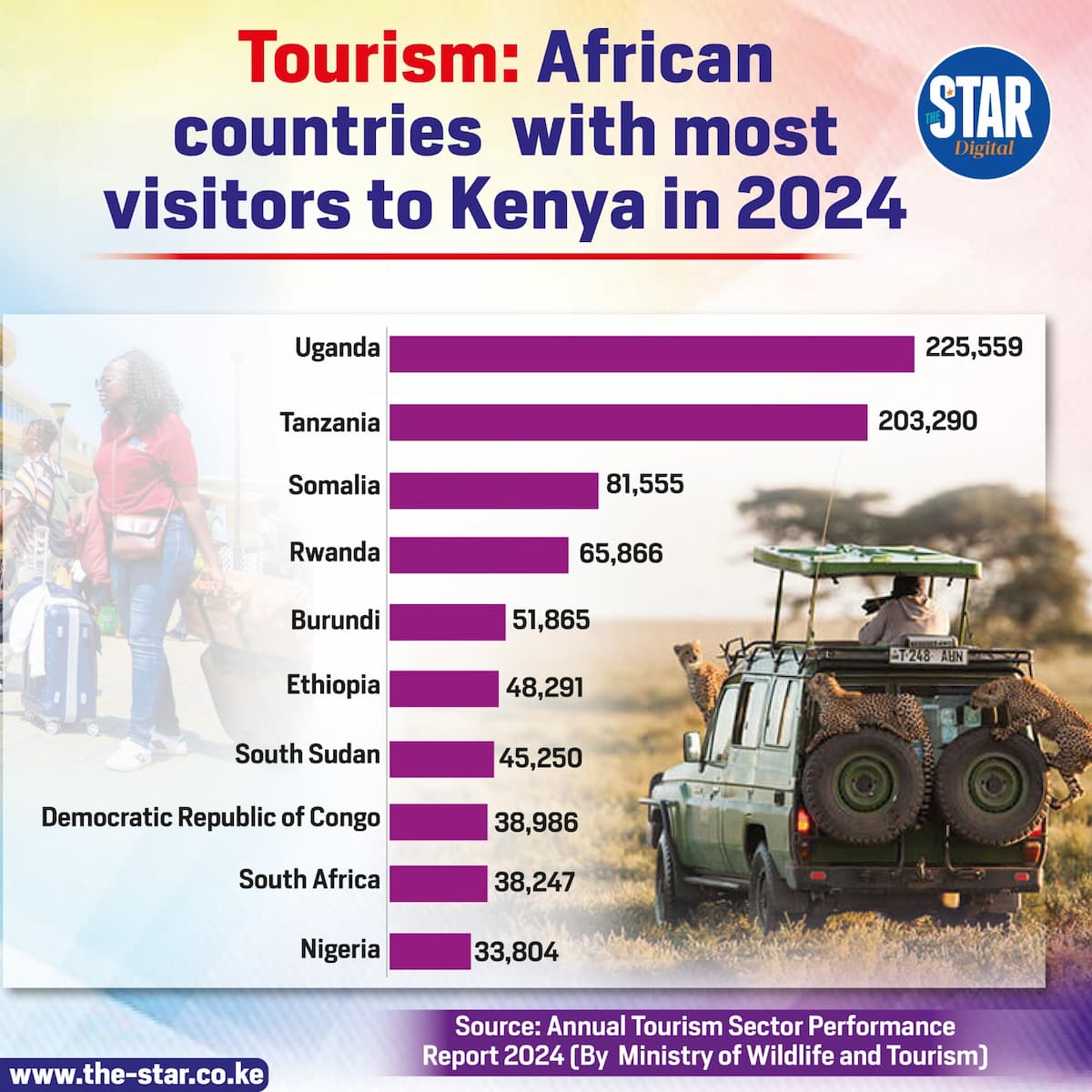
Kenya’s tourism industry saw a remarkable growth in 2024, with the country earning a total of Ksh 452.2 billion, marking a significant 20% increase from the Ksh 377.5 billion recorded in the previous year. According to reports, the tourism sector has been thriving, driven by various factors, including strategic marketing efforts, diversification of tourism products, and the introduction of new scheduled flights, all of which have attracted more international visitors.
Tourism’s Impact on Kenya’s Economy
Tourism remains one of Kenya’s most vital economic sectors, ranking as the second-largest foreign exchange earner after agriculture. Agriculture, contributing around 70% to the nation’s Gross Domestic Product (GDP), has long been the dominant industry in Kenya. However, tourism has consistently played a significant role in supporting the country’s economy. The impressive growth in earnings demonstrates the sector’s resilience and its potential to provide additional support to the national economy, helping it withstand fluctuations in other sectors.
In 2024, the number of international tourists visiting Kenya reached 2.4 million, which is a notable increase. The surge in arrivals is attributed to aggressive marketing campaigns, effective product diversification in the tourism sector, and the opening of new scheduled flights, all of which have made Kenya more accessible to global travelers.
Key International Markets for Kenya’s Tourism
Kenya’s top source of international tourists in 2024 was the United States, which accounted for 12.8% of the total arrivals. This market has consistently been a strong contributor to Kenya’s tourism industry. Following the U.S., neighboring countries Tanzania and Uganda ranked second and third, respectively, contributing significantly to the increase in regional tourism.
Moreover, there were 975,883 tourists from the African continent alone, which made up 40.8% of the total international arrivals to Kenya. This rise in African tourists highlights the growing interest within the region, with more African travelers discovering Kenya’s rich cultural heritage, wildlife, and scenic landscapes. The increased interest in Kenya from these regions suggests a rise in intra-African tourism, presenting opportunities for local tourism-related businesses to tap into this growing demand.
Bed Night Occupancy and Its Growing Impact
The rise in international visitors has also been reflected in the increase in bed night occupancy, which surged by 12% to reach 5.17 million nights in 2024. This growth is a clear indicator of the thriving hospitality sector and the expanding demand for accommodation options across Kenya. As international arrivals continue to rise, the number of overnight stays and the overall tourism expenditure is expected to grow, benefiting the local economy by supporting hotels, lodges, restaurants, and other tourism-related services.
Tourism Targets for the Future
Looking ahead, Kenya aims to continue building on the momentum gained in 2024. The tourism sector’s new targets for 2025 include attracting at least 3 million international tourists and increasing the earnings from tourism to Ksh 560 billion. These ambitious goals highlight the government’s commitment to furthering the growth of tourism in Kenya and establishing it as a leading destination for global travelers. The emphasis on expanding marketing efforts, developing new tourism products, and improving infrastructure will be crucial in achieving these targets.
Global Impact on Travel and Tourism
Kenya’s tourism growth has far-reaching implications, not only for the country but also for the global travel industry. With the increased number of international tourists and the sector’s growing contributions to Kenya’s GDP, more travel companies, international airlines, and hospitality providers are likely to focus on Kenya as a primary travel destination. This increased interest will help diversify the global tourism market, encouraging more travelers to explore the unique offerings that Kenya has.
This growth could also have a ripple effect on neighboring countries as they benefit from the rising number of tourists in East Africa. As Kenya becomes an even more significant player in the international tourism sector, travelers from different parts of the world may start exploring the wider region, thereby benefiting other East African countries with similar attractions.
The growing appeal of Kenya’s natural wonders, such as the world-famous Maasai Mara, Amboseli National Park, and the beaches along the Indian Ocean, will likely continue to drive tourism interest. Additionally, Kenya’s expanding tourism infrastructure, such as improved transport connections and accommodations, will help support the increasing number of visitors, making the country more accessible and welcoming to global travelers.
A Bright Future for Kenya’s Tourism
Kenya’s tourism industry has demonstrated impressive growth in 2024, driven by increased international arrivals, strategic marketing efforts, and the development of new tourism products. With a strong economic contribution, tourism continues to be a key pillar of Kenya’s economy, second only to agriculture. The government’s ambitious plans for 2025 show a clear vision for sustained growth in the tourism sector. As Kenya’s appeal as a global travel destination continues to rise, the effects on the global travel industry will be significant, leading to greater regional collaboration and a stronger position for Kenya on the world stage.
Source: Travel and tour world



